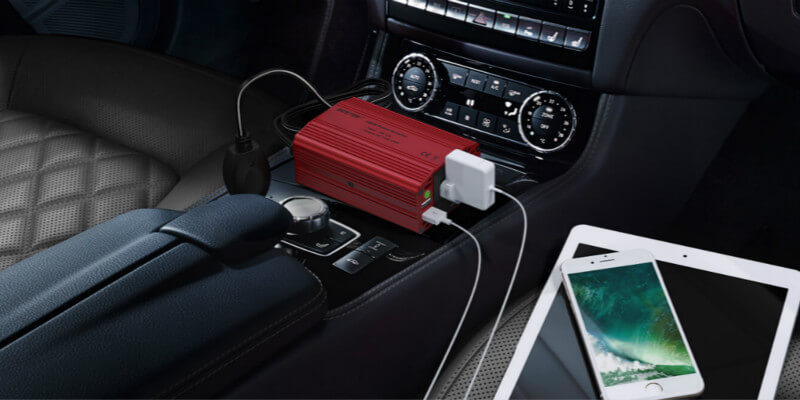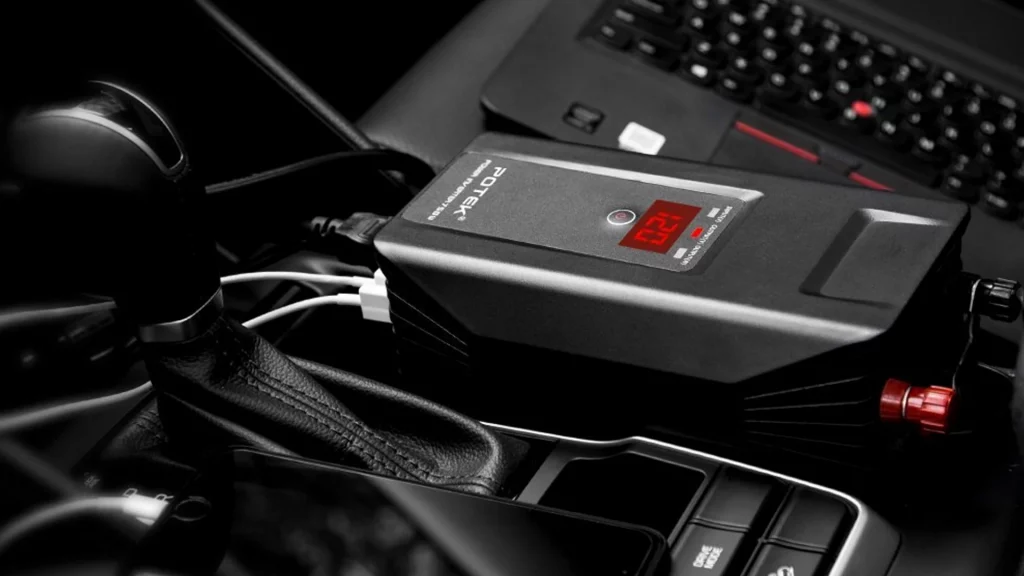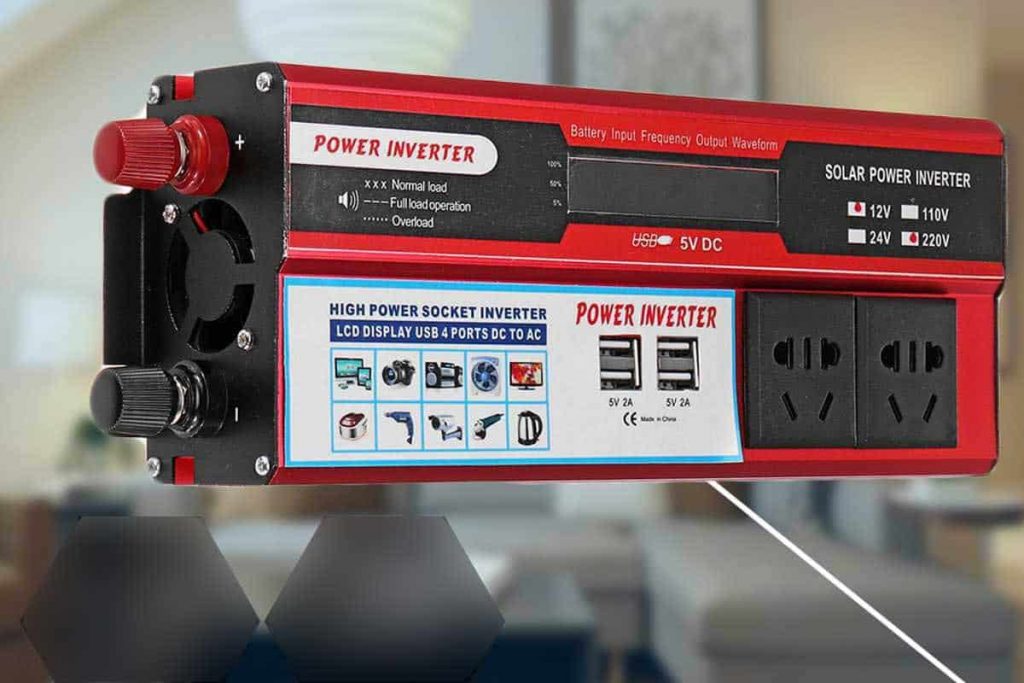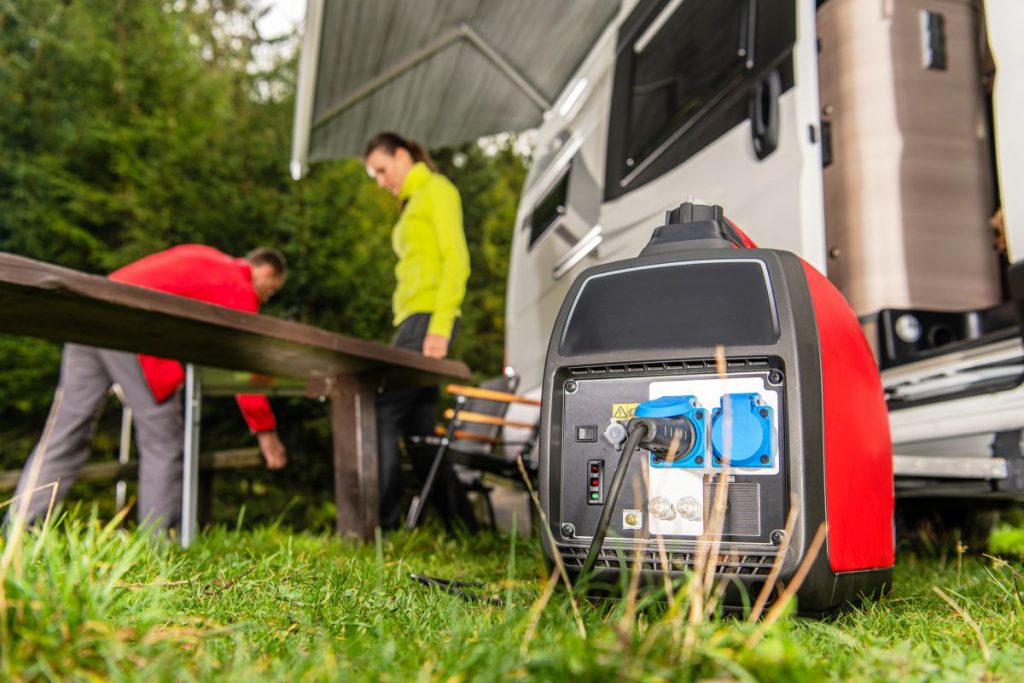What Is The Difference Between An Inverter And Converter?
By Slyng Team
Updated Feb 18, 2024

An RV or similar vehicle incorporates both converters and inverters. While they are both electrical equipment, they fulfill very different functions. It's important to understand what these two things do so that you can use them properly and keep things running smoothly.
Table of Contents
In this article, we’ll break down exactly what a converter and inverter are, where the two are similar, and where they’re different.
What Is An Inverter?
An inverter is a device that turns direct current (DC) into alternating current (AC). In an automotive context, an inverter will permit you to use your car’s battery to power electronic devices. You’ll need an inverter to do this because of the current differences.
Mains power – the kind that you get in your house – is AC power. The vast majority of consumer devices run on AC power. Therefore, all you need to do at home is plug your devices in.
On the other hand, cars and other vehicles run on batteries, which provide DC power. An inverter converts the DC electricity coming from your batteries into the AC power that your appliances need.
These days, cars may come with USB ports. But not all cars have them, and they can only go so far. Many other devices still need a full-sized plug and outlet – this is where an inverter comes in. It’ll provide the power and sockets that your appliance needs to get running.
User Concerns
Power inverters come in two major types and a variety of sizes. Some can be small, around the size of an extension cord, and may even be shaped to fit in your cup holder. A larger power inverter may need to be stored at the back of your truck until something needs AC power.
More power generally needs more substantial internals, so powerful inverters are going to be bigger. Always check a power inverter’s specifications to see if it can provide the voltage your devices need and understand how long it can run off your battery.
Where a power inverter plugs into your car will depend on how much power it draws. Generally speaking, an inverter drawing up to 200 watts can plug into your cigarette lighter port. For heavier energy loads above 200 watts, the power inverter has to be directly connected to the battery.
Inverter Types
You can get two types: pure sine wave inverters and modified sine wave inverters. Each type has certain qualities that may make one type or another a better option for you, depending on your needs.
A pure sine wave inverter is the more expensive option. It provides stable, uninterrupted power. As long as the battery’s still good, a pure sine wave inverter can keep any AC voltage device powered.
A modified sine wave inverter (or square wave inverter) won’t cost as much, but it's less efficient and some devices cannot run on a modified sine wave.
In terms of electrical quality and supply, pure sine wave inverters will always be better than modified sine wave ones. However, the cost of a pure sine wave model may be prohibitive. Depending on the appliances you need to supply, you may be able to get by with a square wave inverter. On the other hand, if you have to have certain appliances like air conditioning, you’ll need a pure sine wave.
How can you tell if a device needs a pure sine wave to run properly? Below are some considerations:
- It has an AC motor.
- It is sensitive medical equipment.
- It may suffer from electrical interference.
- It has an electronic timer or digital clock.
If any of these apply, then you’ll need a pure sine wave inverter. If none apply, then you can get by with a modified sine wave.

What Is A Converter?
Power converters perform the opposite function as inverters. A converter is a device that turns alternating current (AC) into direct current (DC). A DC-DC converter is also possible, but they aren't common in automotive circles.
Some everyday appliances (e.g. laptops) run on DC voltage, instead of the AC electricity that mains power provides. Note how every laptop’s power cable includes a transformer in the middle.
Typical Uses
In an automotive context, a power converter has two main uses:
- Charges your DC batteries
- Supplies power to your appliances
A power converter is most commonly seen in an RV, camper trailer, or similar vehicles that have DC power appliances. An RV converter takes “shore power”, or the AC mains power supply, and converts it into the DC power that your batteries or appliances need, allowing them to run on automotive batteries.
If you’re living off the grid and relying on solar panels to recharge your RV's house batteries, we still recommend having a power converter. This will let you use mains power as needed, especially if certain circumstances hinder the effectiveness and performance of your solar panels, such as an overcast or cloudy day. Solar power will likely be your mainstay, but having the option to recharge batteries with main power will help a lot.
Voltage Regulation
Beyond just providing power, DC converters also regulate the voltage they supply. Remember, RVs come stock with DC appliances. Your lights, vent fans, refrigerator, and thermostat need a converter to ensure that the voltage being supplied to them is at a safe level.
It is theoretically possible to run an RV on mains power entirely, with no batteries tied into the circuit. However, doing so runs the risk of voltage spikes – thus burning out anything plugged into the circuit. It’s better to have a DC converter there to keep things safe.
User Considerations
As a user, the main thing that differentiates the various types of converters is amperage. Your appliances will need a given amount of wattage to run, so you need to supply a converter with the right amperage to run all of your devices safely.
It’s also theoretically possible to replace all your RV’s appliances and accessories with AC power models so that you can run them off mains power, but this is far more effort (and expensive) than is entirely necessary.

What’s The Difference Between A Converter And An Inverter?
So now that we know what each one does, how do they stack up when put next to each other?
Current Type
Converters convert AC voltage into DC voltage, while inverters turn DC voltage into AC voltage. They fill exactly opposite functions and provide power to different appliances.
Usage Cases And Commonality
Between the two, inverters are more common and more likely used in everyday life. Most consumer devices run on AC power, so something that allows people to convert AC from a car battery will be very useful when on the go or when away from mains power. Any car can use them, even if it isn’t an RV.
On the other hand, converters are a niche product that the average car simply doesn't need. Only RVs or any other vehicle with a battery bank can benefit from converters.
Installation
Inverters are plug-and-play. All you need to do is plug it into the vehicle, either through the cigarette lighter port or directly into the battery. There’s no need for complicated wiring work.
Converters are slightly more complicated to install. While they don’t need a full rebuild, they do require close attention to ensure that you connect the correct wires: shore to the converter, then converter to the battery. You’ll also need to secure it to a place where it won’t overheat.
Sources Of Power Supply
A converter draws from mains power, which means it has an unlimited supply of electricity. While a converter may do a lot more things than an inverter does, you don't need to worry about your DC power appliances dying unless the converter itself breaks down.
On the other hand, an inverter relies on a battery. This means that the supply is limited, and you have to keep an eye on your inverter and how much power you’re using to ensure that you won’t run out.
Necessity
An RV or similar vehicle comes stock with accessories and appliances that already run on DC voltage. This means that you don’t need an inverter, so AC power isn’t necessary unless you want some extra amenities.
However, a converter is more often a necessity for an RV. DC conversion is especially useful when you’re hooked up to mains power, as it ensures that your batteries get recharged and your DC power appliances don’t get overwhelmed.

What Are The Similarities Between A Converter And An Inverter?
Despite their differences, a converter and inverter share many similarities, including:
Electrical Equipment
Both are electrical devices that turn one current type into another. They may have different uses, but they both serve electrical functions. A little electrical knowledge will help in properly using both devices and getting the most out of them.
Variations
Both have a wide range of models and configurations based on how much electricity they need to handle. Both converters and inverters come in small, easy-to-handle models for light needs and in larger, chunkier models that can handle large amounts of power.
Usage
You’re most likely to encounter these two when you’re kitting out a camper or RV. They may have different uses, but you’ll want both to ensure that your electrical needs are met. Both the converter and inverter are necessary to supply all your appliances and keep them running while you’re on the go.
What Is The Difference Between An Inverter And Converter?
When you’re kitting out your RV, campervan, or any other vehicle that you’re planning to live in for a while, it’s important to have all your electrical needs met. That means more than just having solar panels – it also means filling the need for both AC and DC power with both an inverter and a converter.
After reading this guide, you should be familiar with just what each one does and how they’re different. Enjoy your time on the road!
